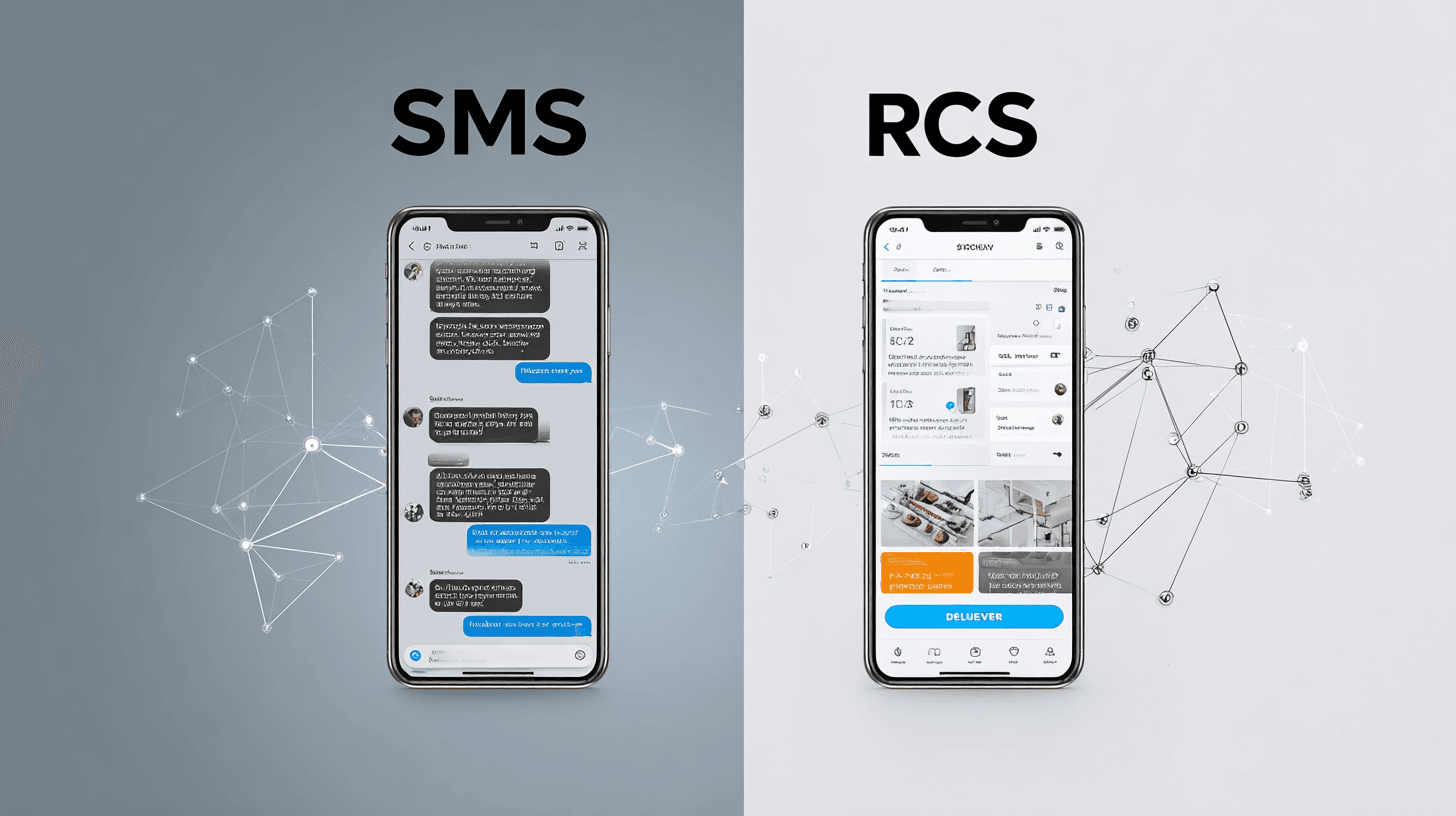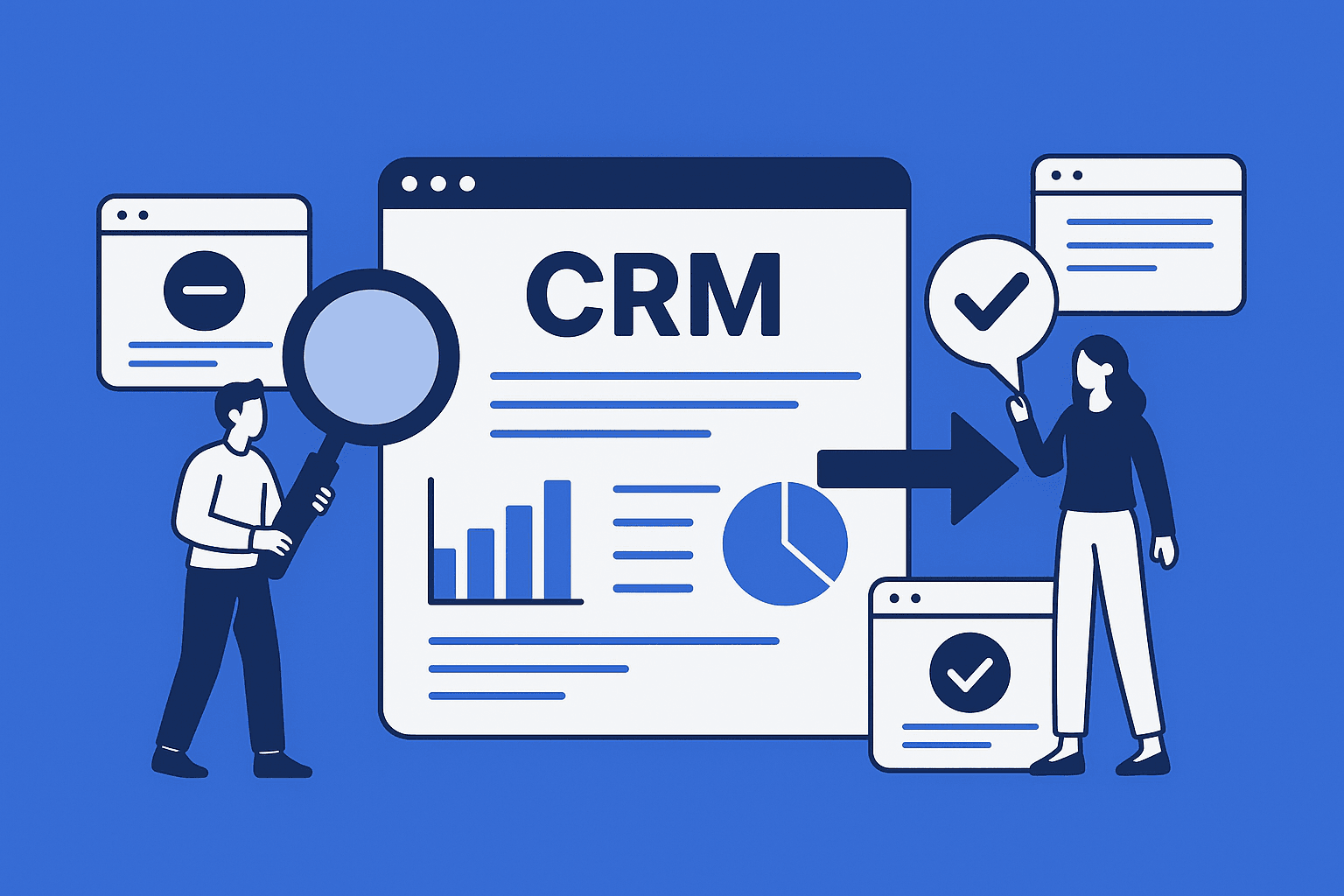RCS Chat (“Rich Communication Services”) is the modern successor to classic SMS. The standard extends text messaging with features you otherwise only know from messenger apps like WhatsApp – such as read receipts, group chats, file and image sharing, or reactions with emojis.
Anders als WhatsApp or Signal, RCS works directly via the phone number and is integrated into the default messaging system of many Android devices. The goal: unified, secure, and feature-rich communication – without any additional app. With RCS Chat, a new era of digital communication begins: from text to group chats – the messaging experience becomes simple, versatile, and efficient, for users and businesses alike.
What is RCS Chat? Definition and origin
RCS Chat (Rich Communication Services) is the current messaging standard intended to fully replace classic SMS and MMS. It brings popular chat features, like the ones you know from WhatsApp or other messenger apps, directly into your default messages app (e.g., Google Messages) – with no additional app required. You can send not only texts but also photos, videos, files, or voice messages, receive read receipts, and run group chats. All of this works over a data connection and leverages state-of-the-art messaging features.
Unlike SMS and MMS, which were tied to the mobile network, RCS messaging uses the internet (mobile or Wi-Fi) – resulting in significantly improved speed, quality, and functionality.
What is an RCS message – definition in one sentence
RCS Chat is the future-proof messaging standard that brings modern chat experiences including multimedia, groups, and interactivity to your device’s default messages app – as the successor to SMS and MMS.
Emergence & industry relevance
With the rise of apps like WhatsApp and Facebook Messenger, it became clear: consumers expect more than simple SMS messages. Mobile carriers, device manufacturers, and Google therefore worked together on RCS (Rich Communication Services) as an open protocol to win back the messaging market with a unified, modern industry standard. Further development led to integration into Android smartphones (particularly via Google Messages) and, with growing data availability, increasing adoption – especially as a reliable tool for business chats and marketing in e-commerce.
RCS messaging features at a glance
RCS messaging elevates classic messaging apps to the level of modern chat platforms and centralizes all essential chat features in one application. Key features include:
- Rich media: Sending multimedia content such as photos, videos, files, GIFs, and location information in high quality.
- Read receipts: See when a message arrives and is read.
- Real-time typing indicator: Know when someone is replying.
- Voice messages: Record and send voice clips directly.
- Group chats: Organize, communicate, and exchange in groups – with read status for everyone.
- Customizable settings: Personalize notifications and delivery options for each conversation.
- Security: Many messenger apps with RCS support now offer end-to-end encryption (depending on app and provider).
Especially powerful for e-commerce and businesses: Multimedia campaigns, customer service via messaging, targeted offers, interactivity through buttons, surveys, or personalized messages – all without forcing the audience to install an app.
Technical requirements & compatibility
To use RCS chats, you need:
- A smartphone with a compatible messages app (usually Google Messages; also Samsung Messages).
- A mobile carrier that supports RCS messaging (in Germany, among others: Telekom, Vodafone, o2).
- A data connection is mandatory: either mobile network or Wi-Fi.
- Compatible participants: Both sender and recipient need a supported device, the right app, and an enabled provider.
- iOS users: Since September 2024, with the release of iOS 18, RCS is also supported by Apple.
Tip: You can tell if your device is RCS “ready” by the chat settings in your messages app – here you’ll find settings for read receipts, groups, file sending, and more.
Messaging experience: features in everyday use
One-to-one chat & multimedia
RCS messaging turns every SMS contact into a real chat experience. Texts, photos, videos, files, locations, and even voice messages are exchanged easily and quickly – directly from the familiar messages app.
Group chats & teamwork
With the new possibilities of group chats, communication becomes more efficient than ever:
- Create groups, manage members, share info, photos, and videos
- Read status and real-time notifications for everyone
- Ideal for e-commerce teams, customer circles, or support groups
Important: For the full group experience, all participants need supported devices, the app, and a data connection.
Comparison: RCS Chat vs. SMS & MMS
To understand the difference, here are the key points at a glance:
| Feature | SMS | MMS | RCS Chat |
|---|---|---|---|
| Medium | Text only | Text, small photos/videos | Rich media, buttons, groups, files |
| Max. length | 160 characters | Up to approx. 300 KB | Virtually unlimited |
| Read receipts | No | No | Yes |
| Groups | Very limited | Limited | Full group features |
| Real-time features | No | No | Typing status, read status, replies |
| Data connection required | No | Partly | Yes (Wi-Fi/mobile) |
| Encryption | Usually no | Usually no | Possible (depending on app/provider) |
| App required | Default messaging | Default messaging | Default messages app (e.g., Google Messages) |
| Device compatibility | Universal | Universal | Depends on device/network/app |
Conclusion: RCS chats offer far more features, comfort, and possibilities than classic SMS or MMS. Sending is more flexible, faster, and more multimedia-rich – for businesses, this means an upgrade for customer dialogue, support, and marketing.
Support and availability
RCS Chat is currently supported primarily on Android devices and is already deeply integrated into the Google Messages app there. Users don’t need to install a separate application – the feature is automatically activated as soon as the device and network operator support RCS. In Germany, almost all major mobile carriers such as Telekom, Vodafone, and O₂ now offer the RCS standard. Activation usually happens automatically via the SIM card, provided the smartphone is connected to the Google service. On Apple devices (iOS), RCS has been available since the release of iOS 18. Apple additionally continues to rely on its own iMessage system.
Marketing potential & use cases for businesses
RCS messaging opens up new paths in omnichannel messaging for marketing, sales, and e-commerce teams:
- Multimedia coupons, promo videos, product photos directly into the messages app.
- Customer service responds in real time, sends status updates, PDF invoices, or support clips without switching apps.
- Interactive messages with buttons, links, surveys, appointment booking, or feedback functions.
- Automation & CRM integration with solutions like Chatarmin – integration into existing marketing or support suites.
- From consultation to after-sales: direct, personal support without media breaks.
Particularly relevant: The target audience is reached directly from their familiar default messages app without a new app – simple, secure, and GDPR-compliant (with correct implementation by the network operator).
Future & competition in the messaging market
RCS is the industry standard, but messaging apps like WhatsApp, Telegram, or Signal offer partly similar features. The key difference: while these have to be installed separately (and rely on proprietary systems), RCS focuses on system integration – with the prospect of low-barrier messaging, high availability, and centralized management. Companies in e-commerce, marketing, and support should align their strategy for Rich Communication Services now – to leverage the benefits of this messaging standard early.
Frequently asked questions about RCS
What is an RCS message?
An RCS message is a modern, internet-based chat message with support for photos, videos, read receipts, and other chat features – directly from your smartphone’s default messages app.
Do you need a special app for RCS?
No, you use your existing messages app on your smartphone. Everything else runs in the background as long as the device and network support RCS.
How secure are RCS messages compared to WhatsApp?
Many RCS implementations now feature end-to-end encryption for one-to-one chats – the exact security depends on the provider, app, and device.
What happens if a participant doesn’t support RCS?
Sending automatically falls back to SMS or MMS – ensuring communication is always possible.
How can businesses use RCS for marketing & support?
Through multimedia, interactive messages, integration with CRM tools like Chatarmin, and personalized offers that land right at the center of the customer’s digital everyday life.








